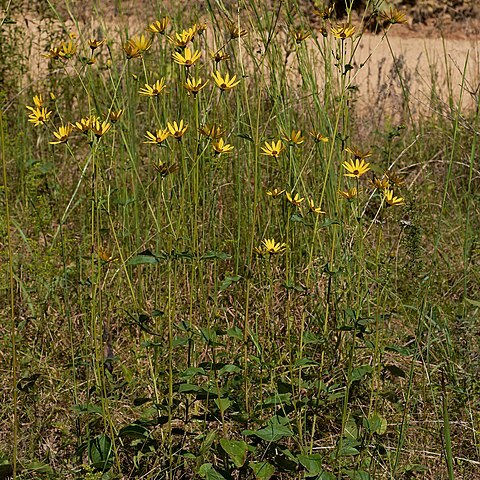Similar to H. atrorubens, and passing into it where their ranges overlap; stems commonly several, to 3 m, relatively more leafy, often to above the middle; blades relatively broad, generally only 1–1.7(–2) times as long as wide, on short, generally inconspicuously hairy petioles that are seldom more than 1/3 as long as the blade and seldom conspicuously wing-flared upward; invol bracts not always ciliolate; 2n=34. Basically Ozarkian, from Ark. and s. Mo. to c. La., e. to s. Ill., w. Ky., and Tenn. July–Oct. Perhaps better called H. atrorubens var. pubescens Kuntze.


